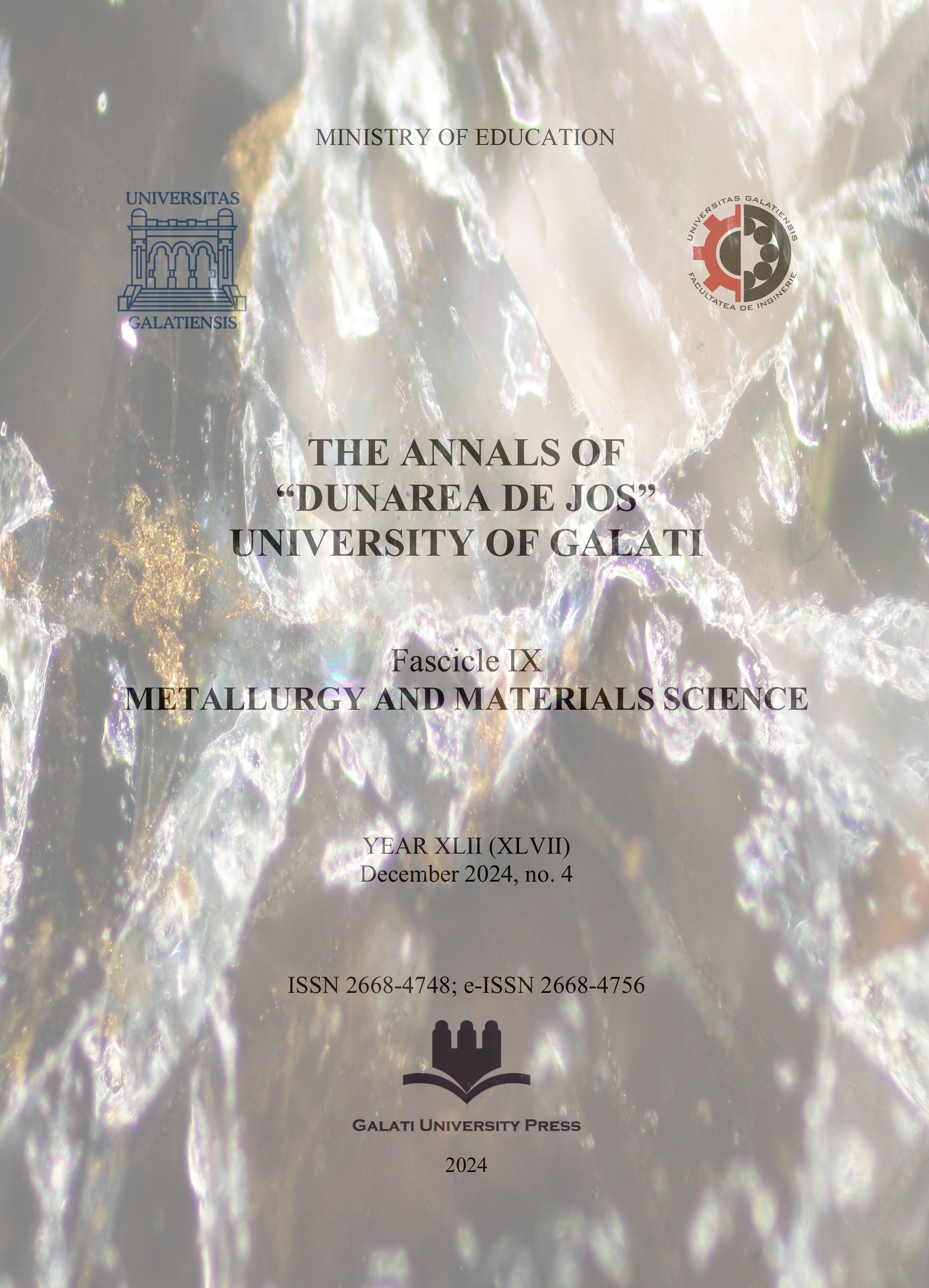Physico-Chemical Characterization of Soil Samples from Bârlad Municipality
Abstract
Soil quality is now thought of in a way that emphasises functionality in a broad context, involving soil not only as an environment for crop production but also as an important reservoir for water storage, as a buffer for filtering, transforming, and neutralising pollutants, and as a habitat for plants and animals. Some attributes (pH, soil conductivity, etc.) can be associated with several easily identified threats to soil quality, some of which are interrelated in the same way. For the present work, laboratory analyses were carried out to determine the physico-chemical parameters of soil from different areas. For soil quality analysis, the following parameters were determined: pH, conductivity, acidity, alkalinity, total nitrogen, aluminium, phosphates, iron, heavy metals, calcium, and magnesium content in the soil.
Downloads
References
[2]. Mureșan A. C., Chimia și poluarea solului, Editura Universității “Dunărea de Jos” Galați, 2018.
[3]. Rajendra Prasad, James F. Power., Soil fertility management for sustainable agriculture, ISBN 1-56670-254-2, Boca Raton, CRC Press, doi.org/10.1201/9780367803063, 1997.
[4]. Ministerul Agriculturii şi Dezvoltării Rurale, Strategia pentru dezvoltarea sectorului agroalimentar pe termen mediu și lung orizont 2020-2030, București, 2015.
[5]. Malik A. A., et al., Land use driven change in soil pH affects microbial carbon cycling processes, Nat Commun, 9(1), 3591, doi:10.1038/s41467-018-05980-1, 2018.
[6]. Yan L., et al., The aluminum tolerance and detoxification mechanisms in plants; recent advances and prospects, Crit. Rev. Environ. Sci. Technol. 52, p. 1491-1527, https://doi.org/10.1080/10643389.2020.1859306, 2022.
[7]. Lehmann J., Kleber M., The Contentious Nature of Soil Organic Matter, Nature, 528, p. 60-68. https://doi.org/10.1038/nature16069, 2015.
[8]. Theresa Merl, et al., Measuring soil pH at in situ like conditions using optical pH sensors (pH-optodes), Soil Biology and Biochemistry, 175, 108862, 10.1016/j.soilbio.2022.108862, 2022.
[9]. Fierer N., Jackson R. B., The diversity and biogeography of soil bacterial communities, Proceedings of the National Academy of Sciences of the United States of America, 103, p. 626-631, https://doi.org/10.1073/pnas.0507535103, 2006.
[10]. Rousk J., et al., Soil bacterial and fungal communities across a pH gradient in an arable soil, The ISME Journal, 4 (10), p. 1340-1351, https://doi.org/10.1038/ismej.2010.58, 2010.
[11]. Cao H., et al., Soil pH, total phosphorus, climate and distance are the major factors influencing microbial activity at a regional spatial scale, Scientific Reports 6, p. 1-10, https://doi.org/10.1038/srep25815, 2016.
[12]. Slessarev E. W., et al., Water balance creates a threshold in soil pH at the global scale, Nature 540, p. 567-569, https://doi.org/10.1038/nature20139, 2016.
[13]. Yu Shi, et al., Threshold effects of soil pH on microbial cooccurrence structure in acidic and alkaline arable lands, Science of the Total Environment, 800, 149592, 10.1016/j.scitotenv.2021.149592, 2021.
[14]. Hadi Pirasteh-Anosheh, et al., Relationship between soil salinity and alkalinity with Alhagi camelorum growth in hypersaline and hyperarid environments, Journal of Arid Environments, 206, 104830, 10.1016/j.jaridenv.2022.104830, 2022.
[15]. Haixia Zhao, et al., Physicochemical properties and salinization characteristics of soils in coastal land reclamation areas: A case study of China-Singapore Tianjin Eco-City, Heliyon, 8, e12629, DOI:10.1016/j.heliyon.2022.e12629, 2023.



